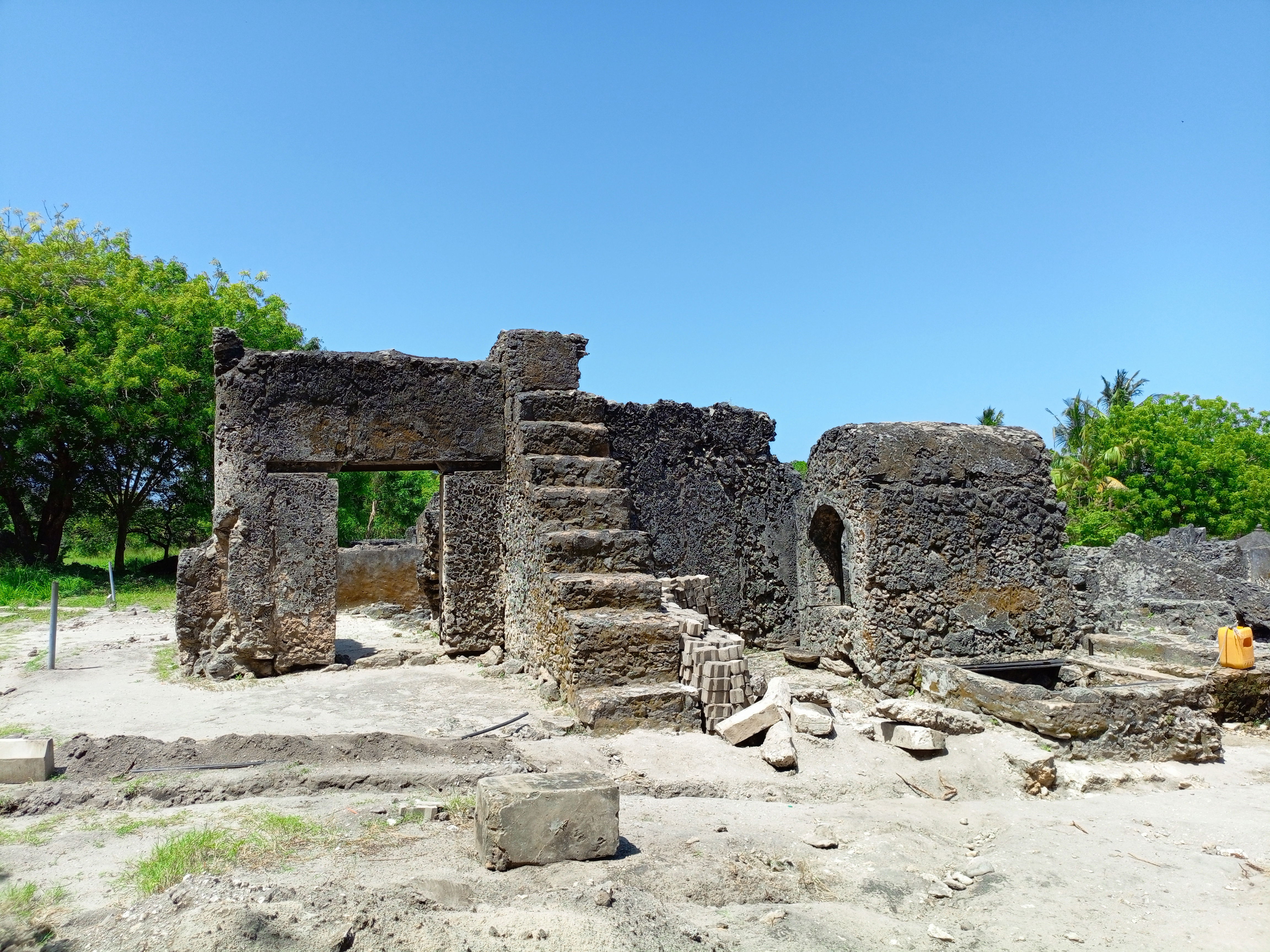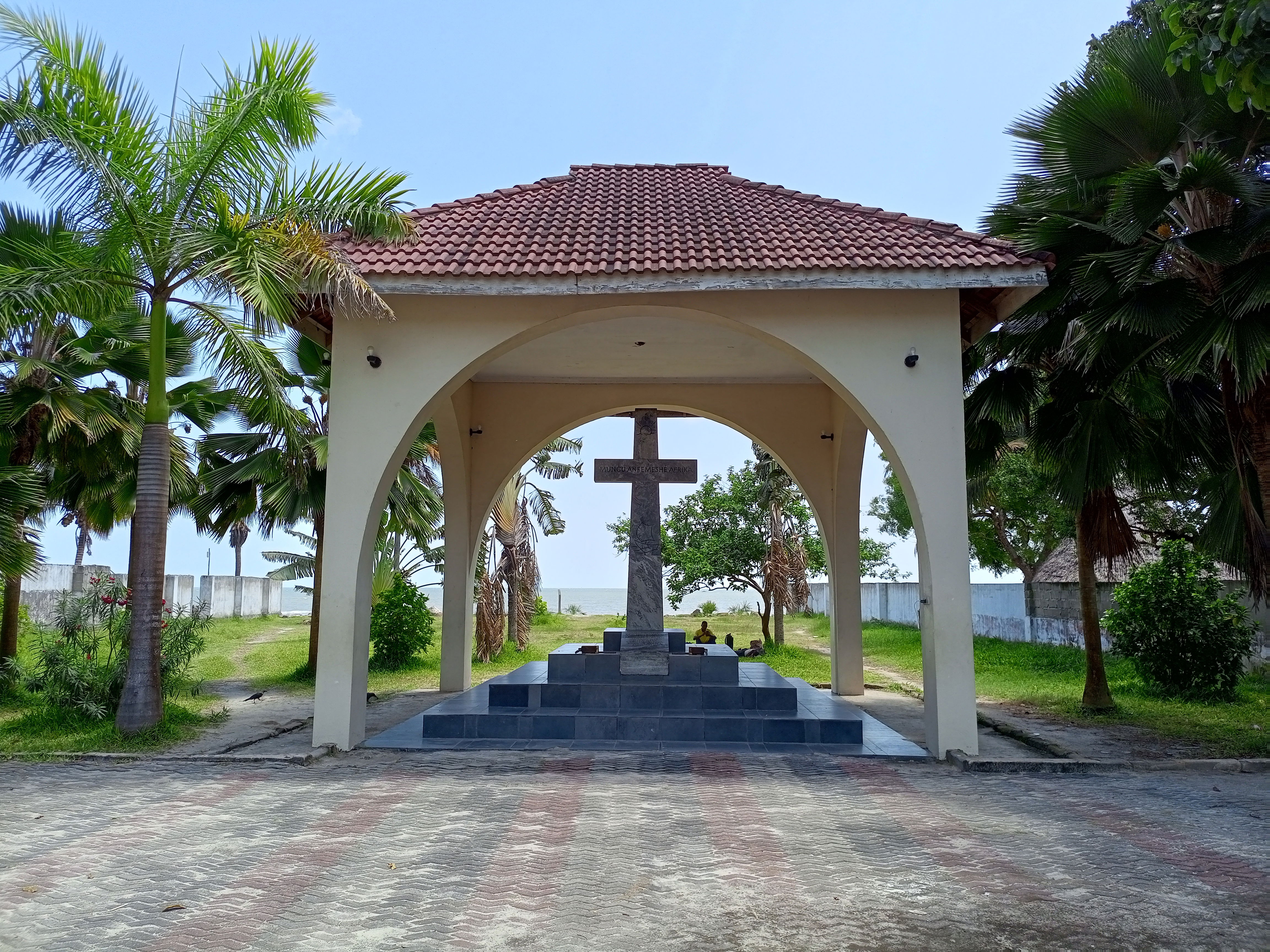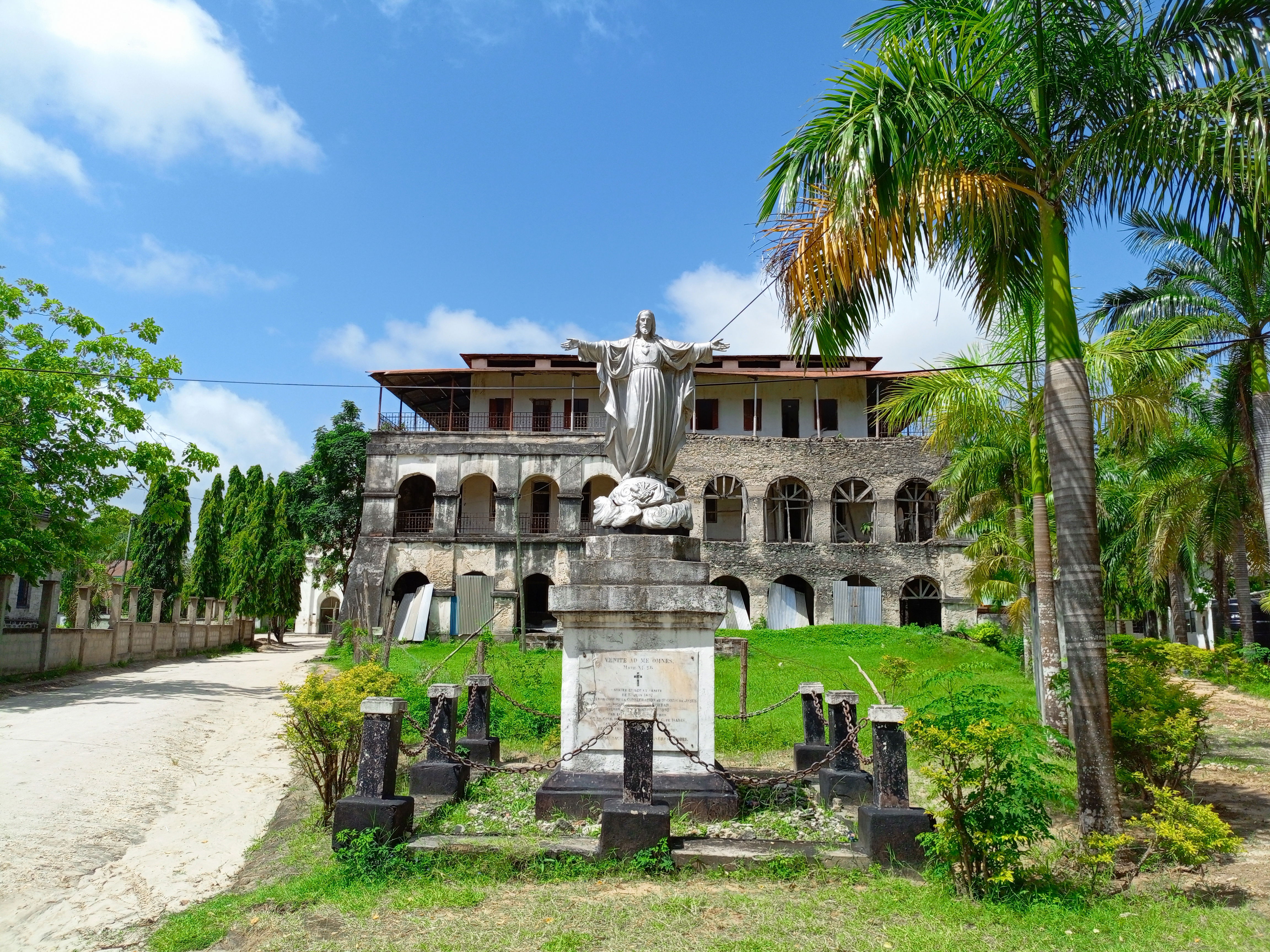My Tour of Bagamoyo Was Capped Off By a Visit to the Catholic Museum
Earlier on this unforgettable day, I visited Kaole Ruins and Old Town. My visit to Kaole’s 13th-century mosque and tombs felt like a pilgrimage, rich with a sense of reverence and history. As I wandered through the winding streets of Old Town, I explored the Old Fort, the former Slave Market, and the imposing castle once home to the German colonial governor.
It felt like walking through a time machine. One step at a time, the past unfolded around me in vivid detail. Every artifact, faded document, or weathered stone seemed to whisper stories of a different era—echoes of lives once lived, battles once fought, and traditions once honored. As I moved through ruins and shadowed corridors, there was a unique sense of slipping through centuries, walking alongside merchants, chiefs, slave traders, colonialists, and freedom fighters. For a fleeting while, I was not a visitor but a silent participant in history’s grand narrative.
Lunch break took place at Traveler's Lodge. While chowing down some chicken wings, my mind drifted into the past. This time, it was a recent past, not sometime in the 13th century. I reminisced about the weekend I escaped to this palatial waterfront property in 2001. Twenty-plus years down the line, I found myself gazing at the cottage I once slept in, wondering how time flies.

My visit to Kaole's 13th-century mosque and tombs felt like a pilgrimage, rich with a sense of reverence and history.
After lunch, I stepped out of the lodge and flagged down a bodaboda. If you're reading this from South Dakota, a bodaboda is a motorcycle taxi—a fast, nimble way to get around. Across Africa, these two-wheeled transport machines go by many names, but "bodaboda" is the most common in Uganda, Kenya, and Tanzania. They carry just about everything. On this continent, it’s not unusual to see an entire household piled onto a 100cc bodaboda.
My last stop was the Catholic complex, home of the Holy Ghost Fathers. Upon arrival, I stood in silent awe and marveled at the oldest church in East Africa while listening to intriguing secrets whispered by its sun-bleached walls. When I strolled to the beach, the calm lapping of the tide was interrupted by the sight of a cross erected in 1868 to mark the establishment of the mission.
Before I stepped into the museum, I stopped by Dr. David Livingstone's temporary tomb. It was here, under the towering monument, that the body of the famed Scottish explorer and missionary rested briefly in 1874, after a strenuous journey from the heart of Africa.

When I took a stroll to the beach, the calm tapping of the tide was interrupted by the sight of a cross erected in 1868 to mark the establishment of the mission.
Livingstone had died deep inland near Lake Bangweulu in present-day Zambia. His loyal followers, refusing to let his legacy be swallowed by the wilderness, carried his body over a thousand miles to the coast—a feat of both devotion and endurance. Later on, his remains were shipped to England for burial in Westminster Abbey.
At the onset, Christianity wasn't just a religion. It was part of a larger mission influenced by both humanitarian and colonial ambitions. The Bagamoyo mission, once a haven for freed slaves, now stands as a tribute to the complex intersections of faith, freedom, conquest, and identity.
As a history enthusiast, some trips touch me differently. This was one of them. In the span of about eight hours, I found myself tracing the footsteps of two immensely popular religions and confronting the ghosts of slave traders and colonialists.

At the onset, Christianity wasn't just a religion. It was part of a larger mission influenced by humanitarian and colonial ambitions.